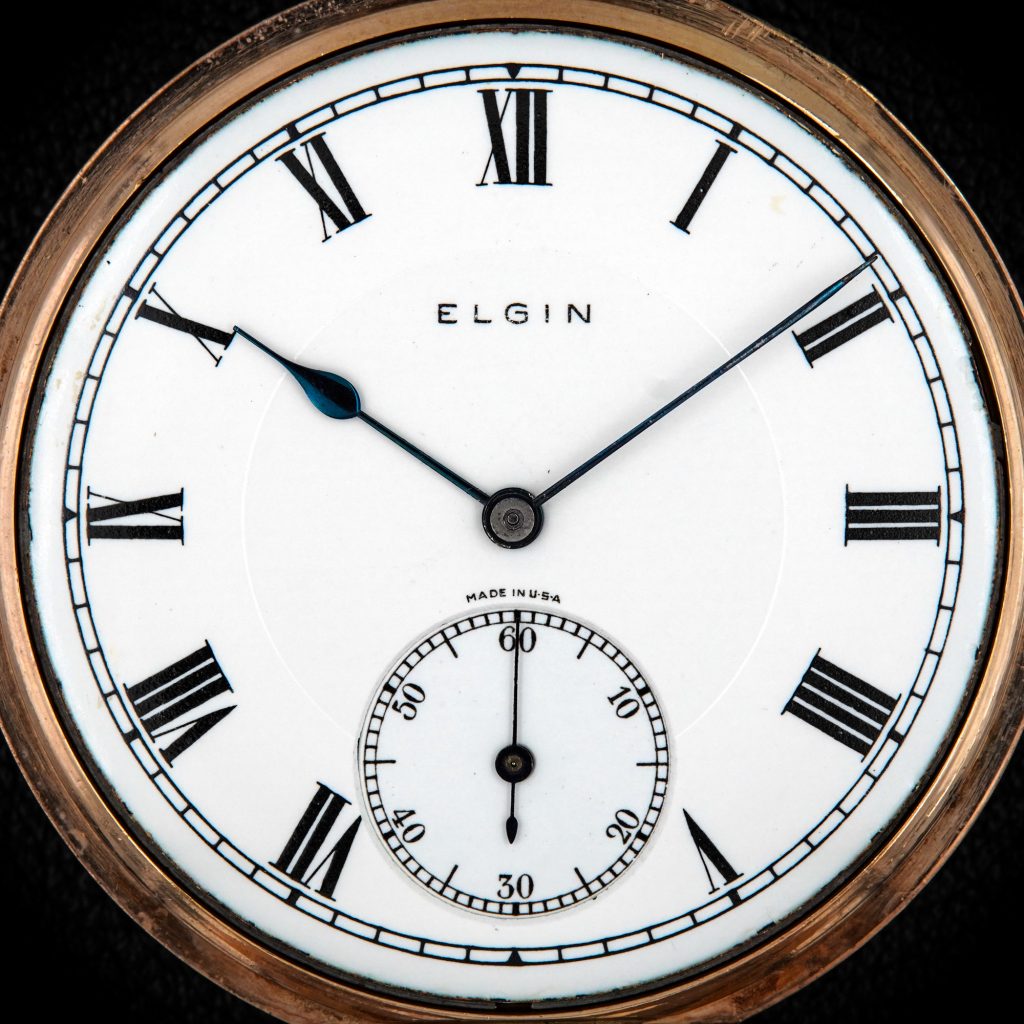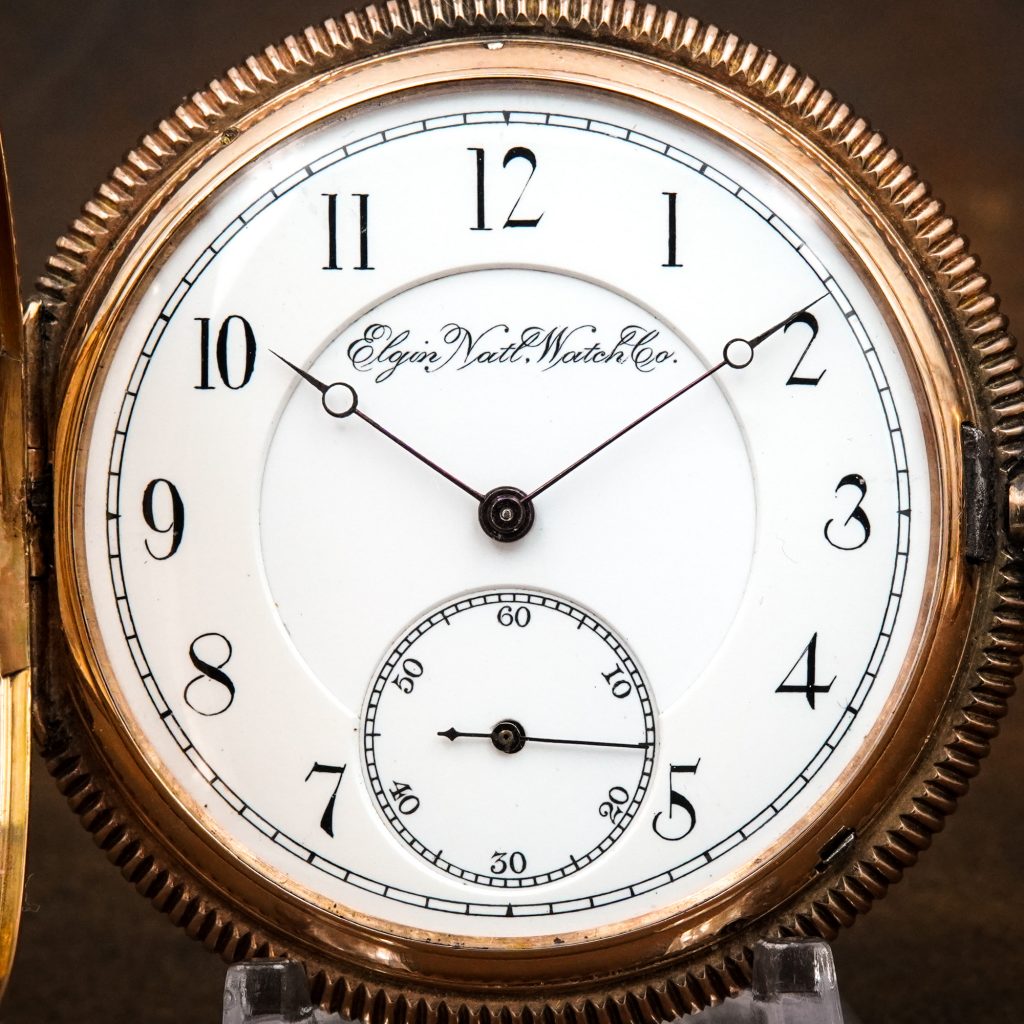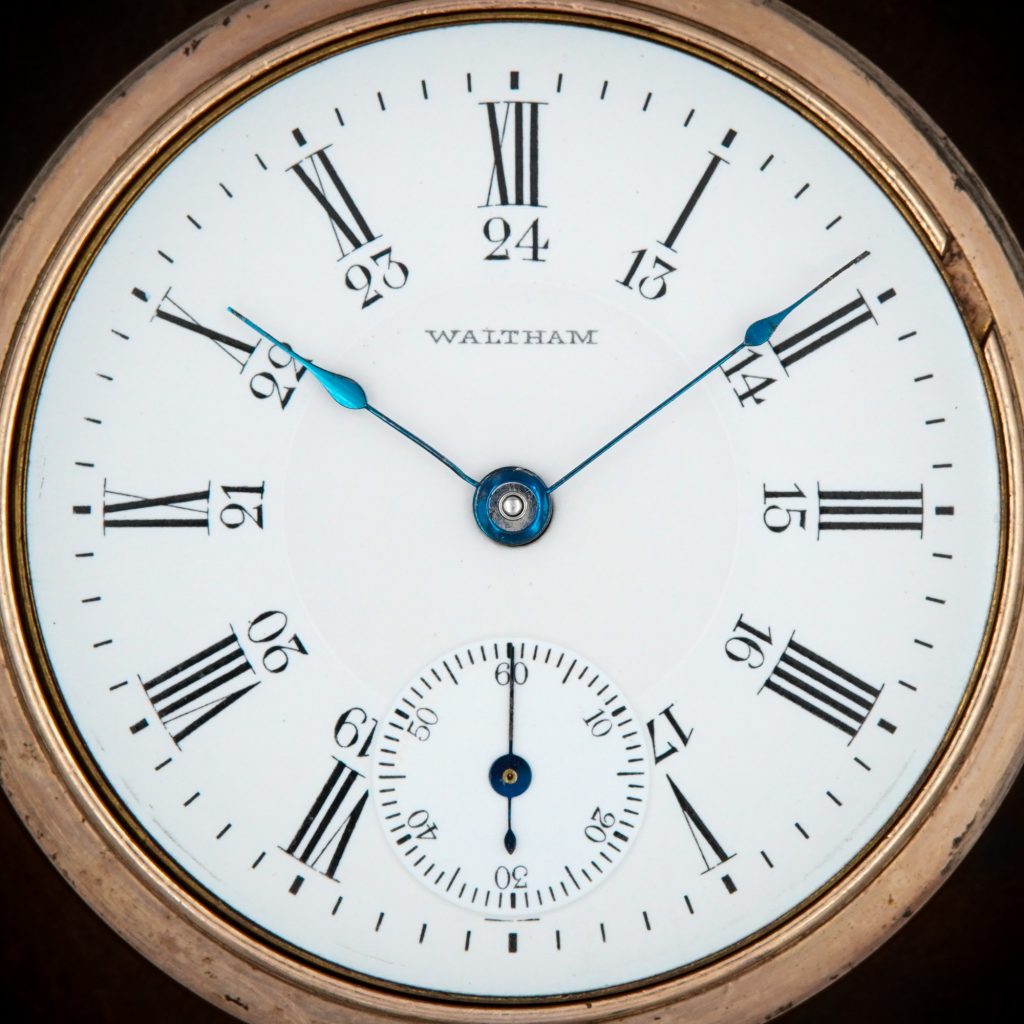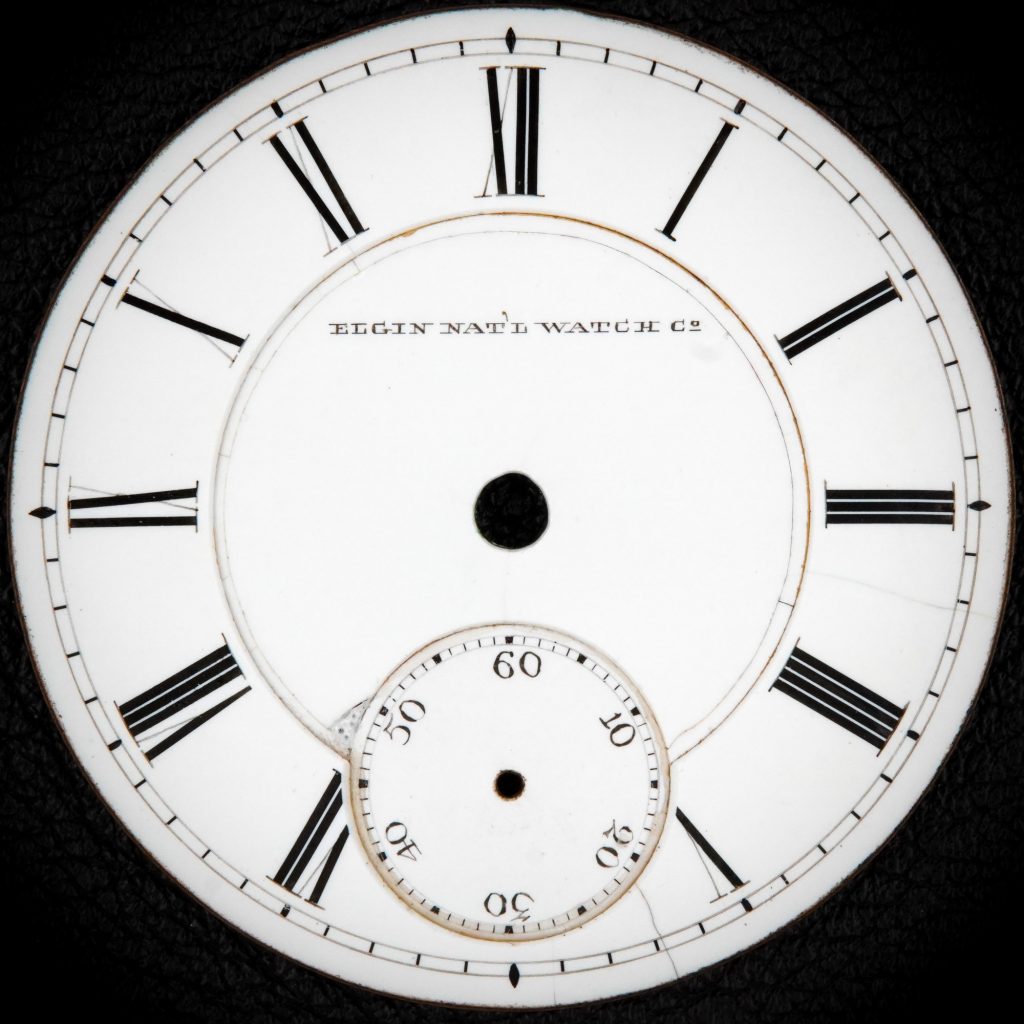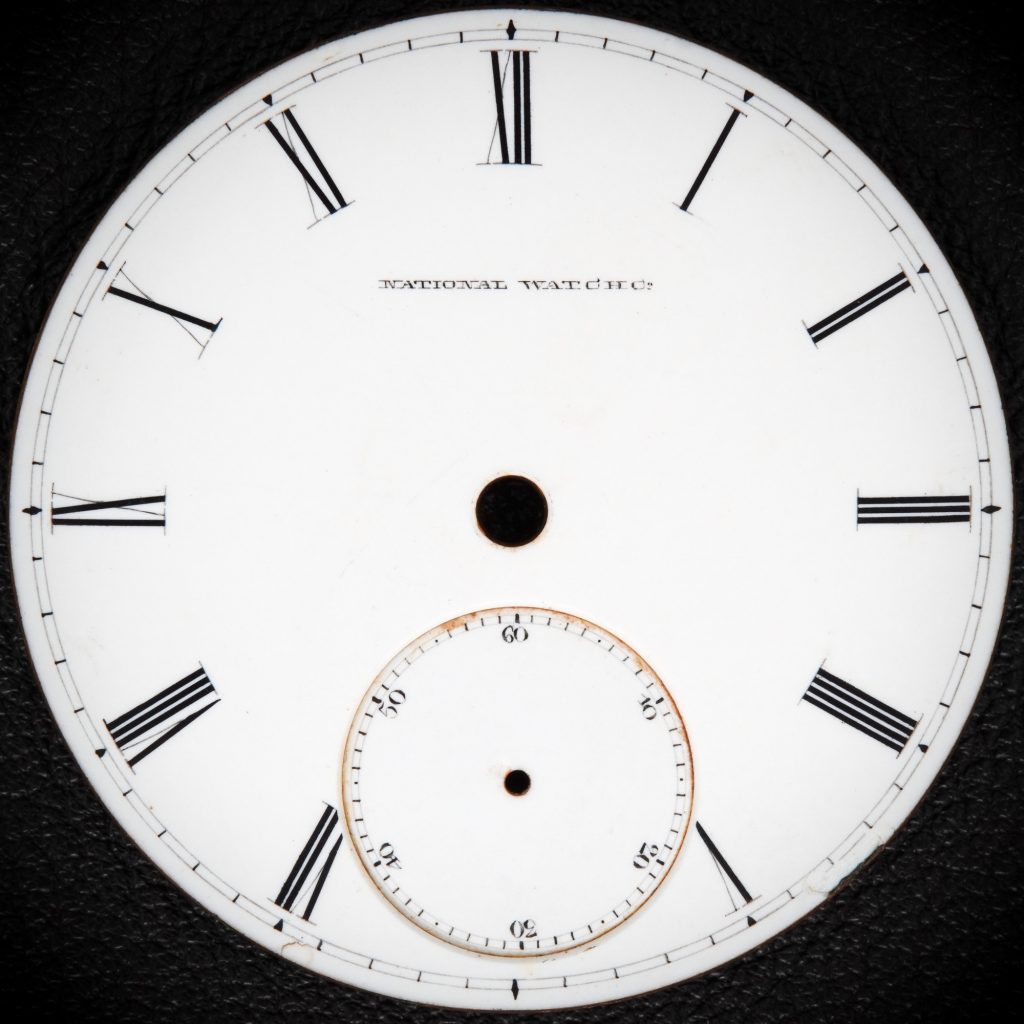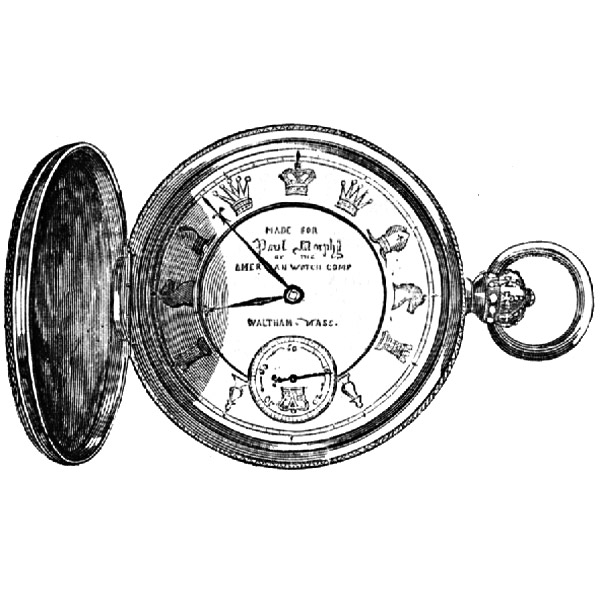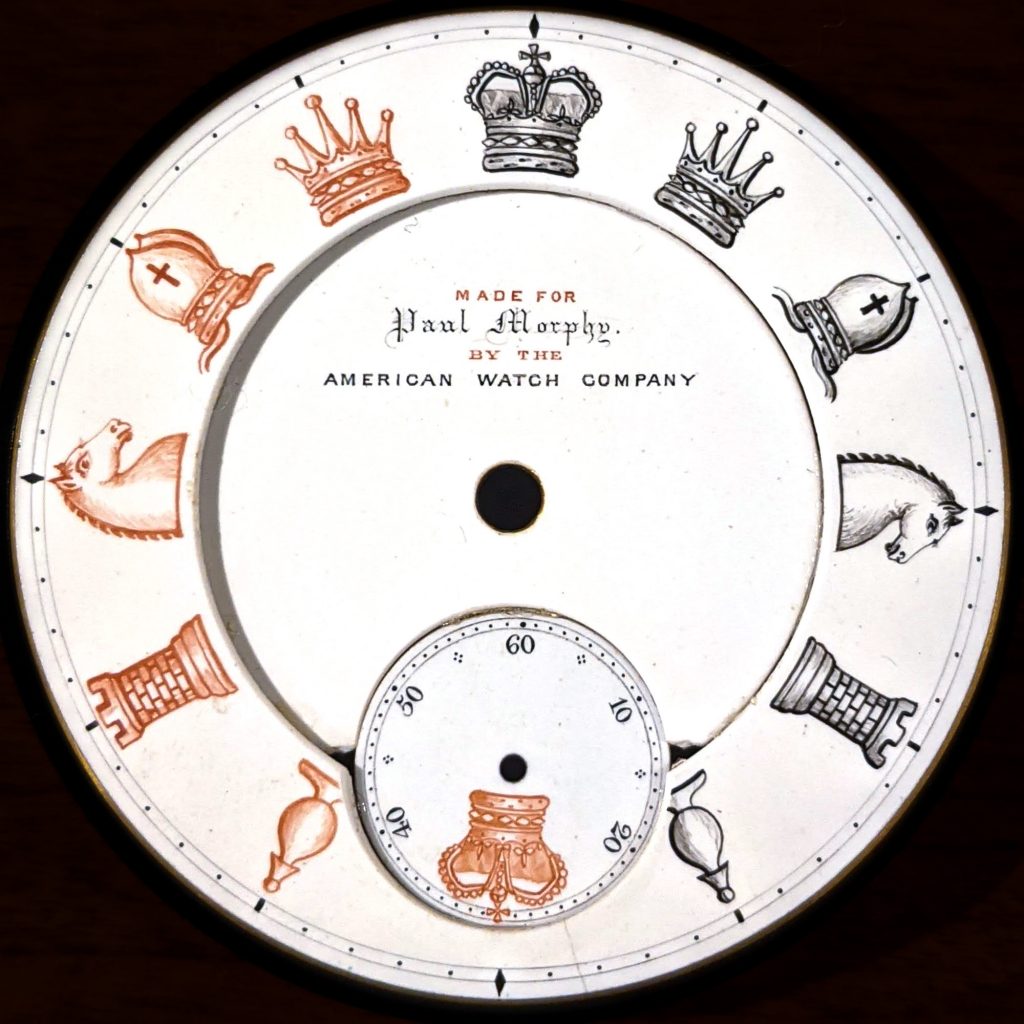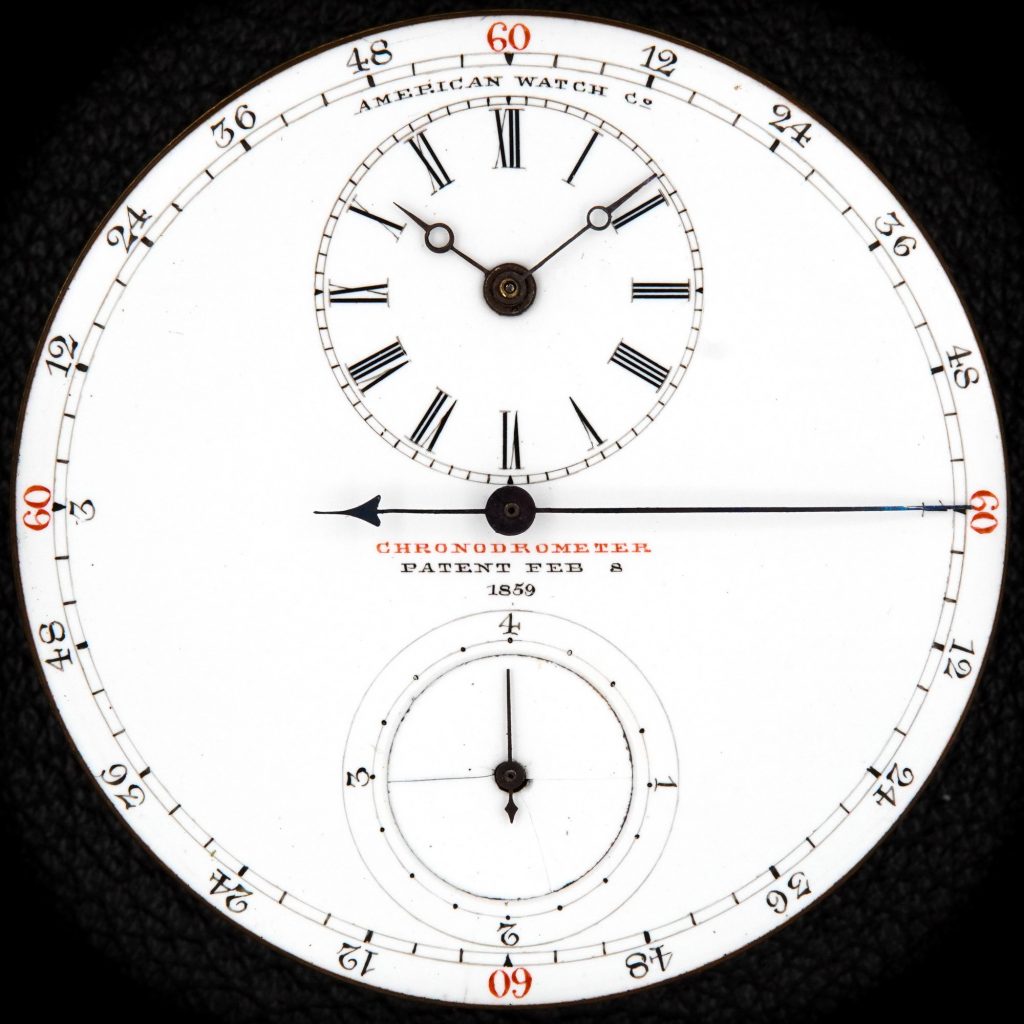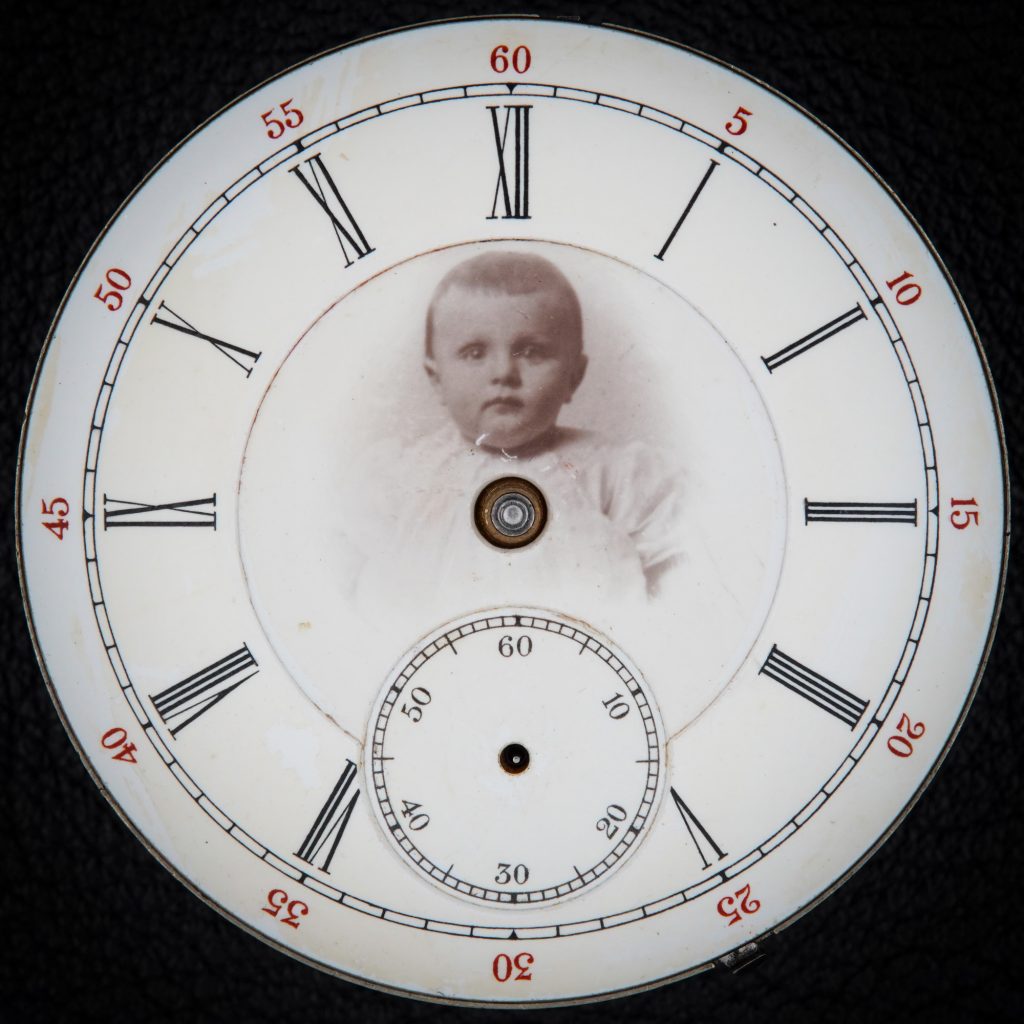
History

Pictured: Roman Numeral Dial on Elgin “Export” Watch, Grade 475, c.1922. Once new transfer and photographic techniques were mastered by the American watch companies, Arabic Numeral dials grew in popularity.
Pictured: Early Arabic Dial on Elgin Interchangeable Movement, c.1885. Until the 1880s, watch dials manufactured in the United States almost exclusively featured Roman Numeral hourly indicators. Not only was this.
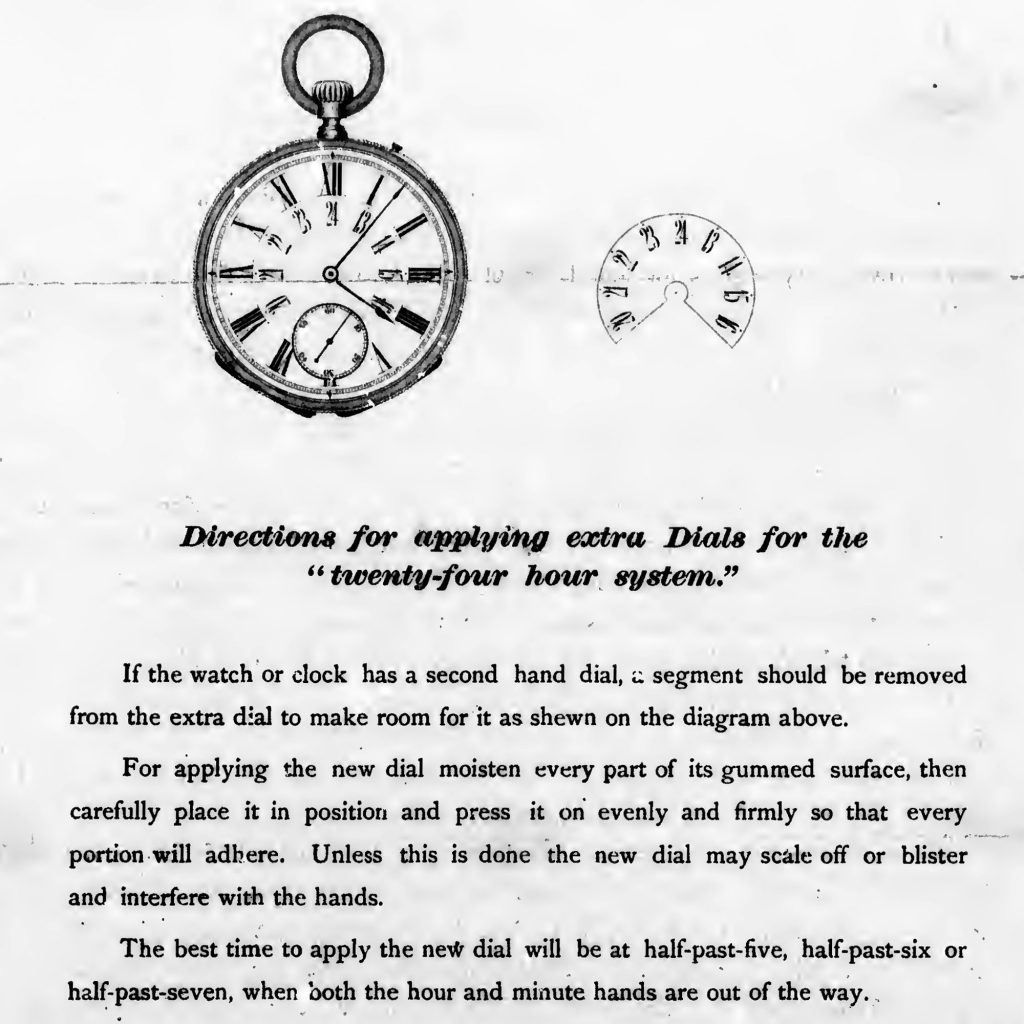
Pictured: Waltham “Twenty-Four Hour Division Dial” Fitted on a 18-Size P.S. Bartlett Movement, c.1907. The adoption of standard time by the railroad industry in 1883 spurred a flurry of innovative.
Pictured: Early Double-Sunk “Elgin Nat’l Watch Co.” Dial, c.1874 Early double-sunk dials produced at the Elgin factory are frequently marred by a mysterious circular crack around the inner perimeter of.
Illustration of Paul Morphy's Custom Chess-Themed Pocket Watch The magnificent hand-painted dial by John Webb is the only known part to survive from Paul Morphy’s chess-themed pocket watch presented to.
Paul Morphy Watch Dial by John Webb, Dial Painter at the American Watch Company. Reprinted with Permission from the National Watch & Clock Museum. Paul Morphy is considered to be.

